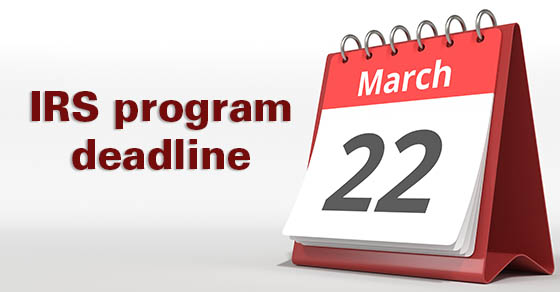
Update on IRS Efforts to Combat Questionable Employee Retention Tax Credit Claims
The Employee Retention Tax Credit (ERTC) was introduced back when COVID-19 temporarily closed many businesses. The credit provided cash that helped enable struggling businesses to retain employees. Even though the ERTC expired for most employers at the end of the third quarter of 2021, it could still be claimed on amended returns after that.
According to the IRS, it began receiving a deluge of “questionable” ERTC claims as some unscrupulous promotors asserted that large tax refunds could easily be obtained — even though there are stringent eligibility requirements. “We saw aggressive marketing around this credit, and well-intentioned businesses were misled into filing claims,” explained IRS Commissioner Danny Werfel.
Last year, in a series of actions, the IRS began cracking down on potentially fraudulent claims. They began with a moratorium on processing new ERTC claims submitted after September 14, 2023. Despite this, the IRS reports that it still has more than $1 billion in ETRC claims in process and they are receiving additional scrutiny.
Here’s an update of the other compliance efforts that may help your business if it submitted a problematic claim:
1. Voluntary Disclosure Program. Under this program, businesses can “pay back the money they received after filing ERTC claims in error,” the IRS explained. The deadline for applying is March 22, 2024. If the IRS accepts a business into the program, the employer will need to repay only 80% of the credit money it received. If the IRS paid interest on the employer’s ERTC, the employer doesn’t need to repay that interest and the IRS won’t charge penalties or interest on the repaid amounts.
The IRS chose the 80% repayment amount because many of the ERTC promoters charged a percentage fee that they collected at the time (or in advance) of the payment, so the recipients never received the full credit amount.
Employers that are unable to repay the required 80% may be considered for an installment agreement on a case-by-case basis, pending submission and review of an IRS form that requires disclosing a significant amount of financial information.
To be eligible for this program, the employer must provide the IRS with the name, address and phone number of anyone who advised or assisted them with their claims, and details about the services provided.
2. Special withdrawal program. If a business has a pending claim for which it has eligibility concerns, it can withdraw the claim. This program is also available to businesses that were paid money from the IRS for claims but haven’t cashed or deposited the refund checks. The tax agency reported that more than $167 million from pending applications had been withdrawn through mid-January.
Much-needed relief
Commissioner Werfel said the disclosure program “provides a much-needed option for employers who were pulled into these claims and now realize they shouldn’t have applied.”
In addition to the programs described above, the IRS has been sending letters to thousands of taxpayers notifying them their claims have been disallowed. These cases involve entities that didn’t exist or didn’t have employees on the payroll during the eligibility period, “meaning the businesses failed to meet the basic criteria” for the credit, the IRS stated. Another set of letters will soon be mailed to credit recipients who claimed an erroneous or excessive credit. They’ll be informed that the IRS will recapture the payments through normal collection procedures.
There’s an application form that employers must file to participate in the Voluntary Disclosure Program and procedures that must be followed for the withdrawal program. Other rules apply. Contact us for assistance or with questions.
© 2024